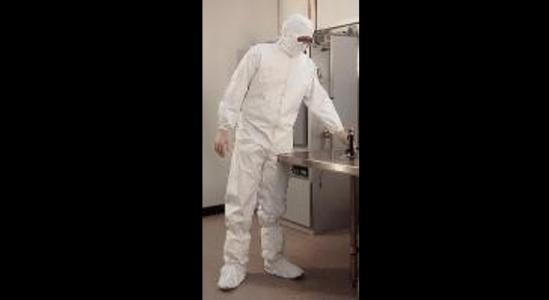Resources
The Bunny Suit Blog
James F. Lamb, Ph.D.
GMP – A new and better definition
Good manufacturing practices (GMP) are the practices required in order to confirm the guidelines recommended by agencies that control authorization and licensing for manufacture and sale of food, drug products, and active pharmaceutical products. These guidelines provide minimum the necessary and sufficient requirements that a pharmaceutical or a food product manufacturer must meet to assure that the products are of high quality and do not pose any risk to the consumer or public.
--modified from the Wikipedia definition
I mean “necessary and sufficient” in the sense of mathematical logic. The minimum requirements are “necessary” from both ethical and legal perspectives. They are also “sufficient” under the same criteria.
Usually there is a “c” in front of the GMP; i.e., cGMP, where the “c” stands for current. With this in mind ethical manufacturers of food, drug, and pharmaceutical products anticipate regulatory criteria changes as new and better methods are developed for their industry. This is a right and proper thing to do.
What, in my opinion, is not right and proper is the level of regulatory overkill so many PET cyclotron facilities around the world impose upon themselves, mostly from inexperience in drug manufacturing, coercion by major equipment manufacturers who want to sell them as much equipment as possible, from fear of the dreaded, but not well understood, regulatory agencies, or a combination of all three. They end up meeting the necessary minimum criterion but also spend resources on practices that are unnecessary.
Cyclomedical has assisted some thirty new cyclotron sites around the world in start-up production of PET radiopharmaceuticals and has seen GMP run the gamut from the reasonable Part 212 requirements to million dollar cleanrooms-within-cleanrooms where even quality control chemistry is performed by bunny-suited personnel. We have even seen cyclotrons placed inside cleanrooms. Process validation results have been the same either way; zero, or near zero, bioburden in the production systems.
Zero Bioburden, how can this be? Rather, how can it not be?
- 3 mL water proton bombarded at the boiling point at 30 atmospheres pressure for 1-2 hours.
- 0.5 to 2 kW power with Mega-rad radiation exposure in the target.
- Sanitized delivery lines, dry between runs.
- Closed system chemical processing, with sterile components typically used.
- No carrier added product, isolated from reaction mixtures and reconstituted with sterile diluents.
- Total processing times of less than one hour.
Cyclomedical is the operator of several PET Cyclotron laboratories, produces FDG under an FDA approved ANDA, has been directly or indirectly responsible for several hundred thousand patient doses, and has a perfect safety record, having never received a single product related customer complaint and having had no adverse patient reactions. Our cGMP fits the new definition: necessary and sufficient practices.
While we are very proud of our perfect record, we recognize that many PET sites match it. FDG is probably the safest widely used drug on the market today. Continuing the trend of regulatory overkill can cause us to lose our cost effectiveness and can result in a downward spiral into insufficient practices.




